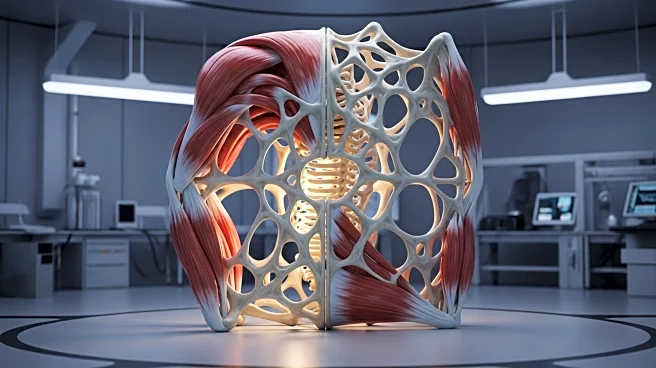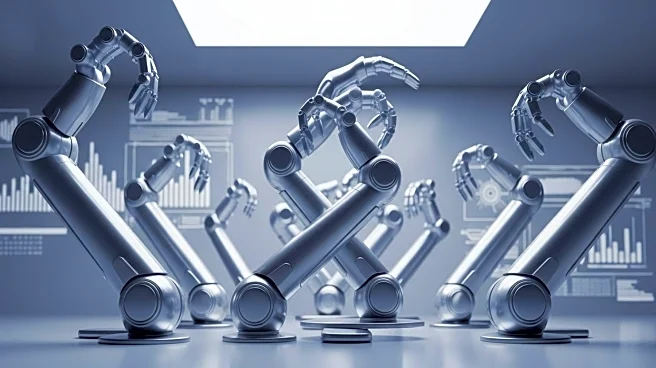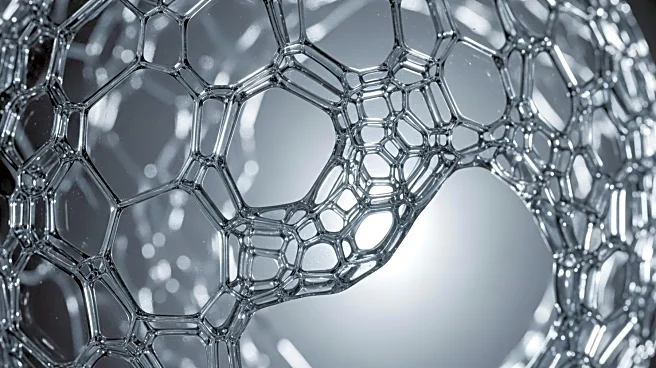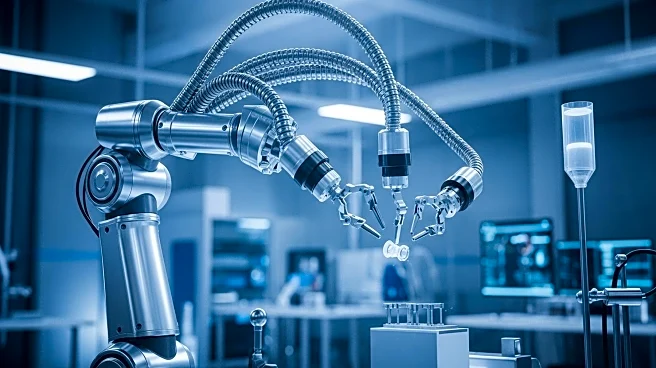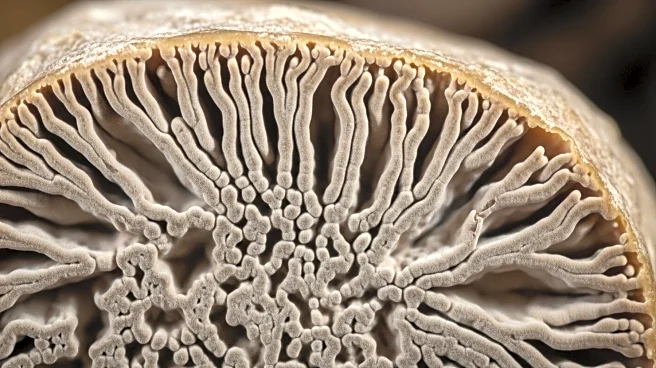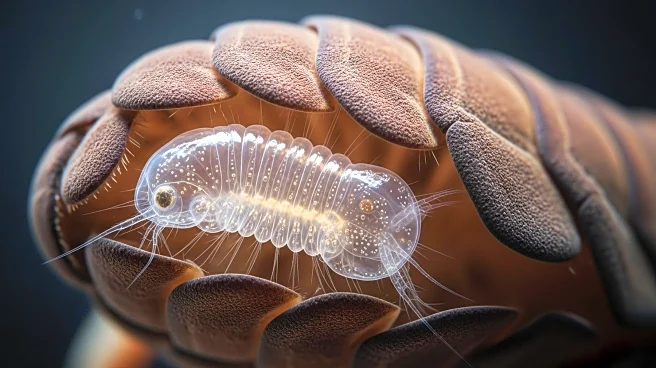What's Happening?
Researchers at ETH Zurich's Soft Robotics Lab have developed a biohybrid system that mimics the biological interface between bones and muscles, aiming to improve force transmission. This innovative technology combines synthetic and biological materials to replicate the structure and function of biological tissues, potentially benefiting fields such as robotics and medical implants. The system features a 3D bioprinted actuator that structurally and functionally mimics the natural connection between muscle and bone, known as the myotendinous junction. The research team, led by Professor Robert Katzschmann, has successfully created a muscle-bone interface using biological cell tissue for muscles and tendons, connected to synthetic bone material. This development marks a significant step towards integrating real muscles and tendons into functional robotic units.
Why It's Important?
The development of biohybrid systems that replicate the muscle-bone interface has significant implications for both robotics and medicine. In robotics, this technology could enhance human-machine interaction, leading to more advanced assistive devices and prosthetics. In medicine, biohybrid systems could pave the way for adaptive prosthetics and lab-grown replacement tissues, offering new solutions for regenerative medicine. By improving the integration of biological and synthetic materials, this research addresses a critical challenge in the transmission of forces, potentially reducing energy losses and increasing efficiency in various applications. The ability to harness engineered biological tissue to reproduce natural musculoskeletal mechanics could revolutionize both fundamental research and practical applications in bioinspired technology.
What's Next?
Future research will likely focus on further integrating real muscles and tendons into functional robotic units, exploring applications in healthcare and assistive robotics. The team may also investigate the use of biohybrid systems in developing adaptive prosthetics and biologically integrated robotic systems. Additionally, the technology could be applied to biomechanical modeling, such as the interaction between the stapes and stapedius muscle in the middle ear. As the research progresses, collaborations with medical and technological institutions may expand, potentially leading to new breakthroughs in regenerative medicine and biohybrid robotics.
Beyond the Headlines
The ethical implications of integrating biological tissues with synthetic materials in robotics and medicine are profound. This technology raises questions about the future of human-machine interaction and the potential for creating biohybrid organisms. The long-term cultural impact could include shifts in how society views the boundaries between biological and artificial systems, potentially influencing public policy and ethical standards in biotechnology. As biohybrid systems become more prevalent, discussions around the regulation and ethical use of such technologies will likely intensify.

